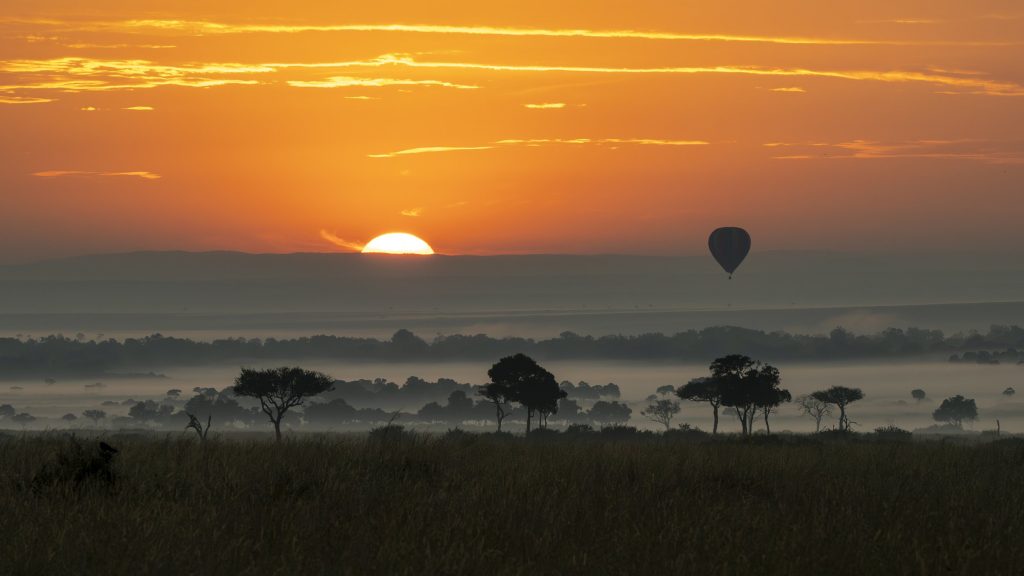East Africa is one of the world’s most revered destinations for anyone seeking the thrill of a safari. With its vast savannas, soaring mountains, and extraordinary wildlife, Kenya and Tanzania offer some of the most pristine and awe-inspiring national parks in the world. From the iconic Maasai Mara to the legendary Serengeti and Ngorongoro Crater, the wild heart of East Africa promises unforgettable experiences for those looking to immerse themselves in nature and culture. This article delves into the best ways to experience Kenya and Tanzania’s wild side, combining cultural insights with natural wonders for a truly transformative journey.
Introduction: Explore the Wild Heart of East Africa through Kenya and Tanzania’s National Parks
When it comes to experiencing wildlife in its rawest form, few places in the world rival Kenya and Tanzania. These two countries form the heart of East Africa’s safari circuit, offering a combination of exhilarating wildlife encounters and deep cultural experiences. The Great Migration, a spectacle that sees millions of wildebeests, zebras, and gazelles moving across the Serengeti and Maasai Mara in search of greener pastures, is just one of the many reasons travelers flock to this region each year.
Kenya and Tanzania boast diverse landscapes, ranging from the flat plains of the Maasai Mara to the rugged terrain of Tanzania’s Ngorongoro Crater. These national parks and game reserves are not only known for their incredible wildlife but also for their vibrant cultures. The Maasai people, who have long lived alongside the animals of these lands, offer visitors a unique glimpse into the traditions and lifestyle of one of Africa’s most well-known indigenous communities.
Kenya’s Culture and Safari: How the Maasai People and the Great Migration Shape the Experience
Kenya’s safari offerings are famous for their cultural richness and its connection to the indigenous Maasai people. The Maasai Mara National Reserve, one of the most famous wildlife destinations in Kenya, is synonymous with the Great Migration, but it is also a place where you can learn about the Maasai way of life. Known for their distinctive red shukas (robes), jewelry, and deep connection to the land, the Maasai people have lived alongside wildlife for centuries. A visit to a Maasai village is an opportunity to learn about their culture, customs, and how they coexist with the wildlife that surrounds them.
The Maasai Mara: Witnessing the Great Migration
The Maasai Mara is one of the best places in the world to witness the Great Migration. Every year, between July and October, over a million wildebeests, accompanied by zebras and gazelles, move in search of fresh grass. This is one of the most spectacular wildlife events on Earth, with predators like lions, cheetahs, and hyenas waiting for an opportunity to pounce. The Mara River crossing is a highlight of the migration, where massive herds of wildebeests charge through the river, often facing danger from crocodiles lurking below the surface. Watching this spectacle unfold is an emotional experience, as it showcases the raw realities of survival in the wild.
Apart from the migration, the Maasai Mara is home to an incredible diversity of wildlife. It is one of the best places to spot the “Big Five”—lions, elephants, buffaloes, leopards, and rhinoceroses—in their natural habitat. Early morning and late afternoon game drives allow you to explore the reserve in the best light and increase your chances of seeing the animals in action.
Maasai Culture and Community Interaction
Beyond the wildlife, Kenya offers an intimate look at the Maasai culture. Visiting a Maasai village allows you to see how these communities have adapted to modern life while maintaining traditional practices. You can witness ceremonies, learn about the Maasai’s pastoral lifestyle, and even participate in dances or other cultural activities. Engaging with local Maasai guides during safaris also provides insight into their relationship with the land, animals, and natural ecosystems.

Tanzania’s Serengeti: The Ultimate Wildlife Adventure and the Beauty of Ngorongoro Crater
While Kenya is known for the Maasai Mara, Tanzania offers its own incredible safari destinations. The Serengeti National Park is arguably the most famous park in Africa, and for good reason. The park’s endless plains and abundant wildlife make it one of the world’s most iconic safari destinations. Coupled with the beauty of Ngorongoro Crater, Tanzania offers a unique combination of wildlife and breathtaking landscapes that makes it a must-visit for anyone seeking a safari adventure.
The Serengeti: A Never-Ending Safari
The Serengeti’s vastness can be overwhelming, but that’s part of its magic. Stretching over 5,700 square miles, it is home to an extraordinary concentration of wildlife. Apart from the Great Migration, the Serengeti offers some of the best game viewing in Africa. It’s not uncommon to encounter herds of elephants, prides of lions, and graceful giraffes roaming across the plains. The Serengeti is also home to the famous “big cats,” including cheetahs and leopards, which can often be seen lounging in trees or stalking prey.
The park’s name itself comes from the Maasai language, meaning “endless plains,” which perfectly captures the sensation of standing on the horizon and seeing nothing but grassy savanna for miles. The Serengeti is best experienced through a combination of game drives and hot air balloon safaris, which offer a unique perspective of the park’s vast landscape and wildlife below.
Ngorongoro Crater: A Natural Wonder
Just a few hours from the Serengeti lies one of Tanzania’s most awe-inspiring natural wonders: Ngorongoro Crater. Formed by a collapsed volcano, the crater is a wildlife haven, home to some of Africa’s densest populations of animals. The crater’s floor is a fertile paradise for wildlife, supporting large herds of wildebeests, zebras, and gazelles, and providing a reliable water source for lions, elephants, and rhinos. It’s a place where you can see the full spectrum of African wildlife in one location.
Visiting Ngorongoro is like stepping into a natural amphitheater, surrounded by towering crater walls and filled with a wealth of wildlife. Early morning safaris are recommended to catch the animals in the best light, as well as to witness the dramatic landscape at sunrise.
Travel Tips: How to Make the Most of Your Safari Experience
Embarking on a safari in Kenya and Tanzania requires careful planning and some insider knowledge to ensure that you make the most of your experience. Here are a few tips to help you have an unforgettable safari adventure.
Choose the Right Time to Visit
The best time to visit Kenya and Tanzania for a safari largely depends on what you want to experience. The dry season, from June to October, is ideal for wildlife viewing, as animals congregate around water sources, making them easier to spot. If you’re hoping to see the Great Migration, plan your trip to coincide with the migration season (typically July to October) when wildebeests are crossing the Mara River.
Stay in a Variety of Accommodations
Safari accommodations range from luxurious lodges to rustic tented camps, and each offers a different experience. Staying in a mobile tented camp, for instance, allows you to be closer to the action, while a luxury lodge offers more comfort and exclusivity. If you’re traveling on a budget, there are also more affordable options, including public campsites and budget-friendly lodges.
Respect the Wildlife and Local Communities
While Kenya and Tanzania’s national parks are a paradise for wildlife lovers, it’s important to remember the importance of responsible tourism. Stick to established safari routes, avoid disturbing the animals, and follow the guidance of your safari guide. Additionally, be mindful of the cultural traditions of the Maasai and other local communities you may encounter, showing respect for their way of life and customs.
Conclusion: The Wild Heart of East Africa Awaits
Kenya and Tanzania offer some of the most remarkable and transformative safari experiences in the world. Whether it’s witnessing the Great Migration in the Maasai Mara or exploring the breathtaking Ngorongoro Crater, these countries will leave you with memories that last a lifetime. The unique combination of wild landscapes, diverse wildlife, and vibrant cultures makes East Africa a truly extraordinary place to experience nature at its most untamed.





















